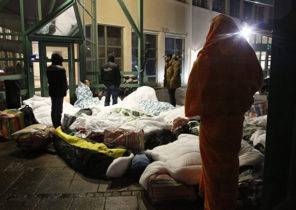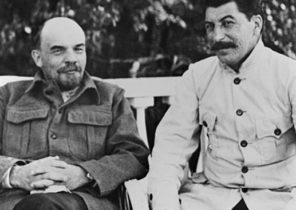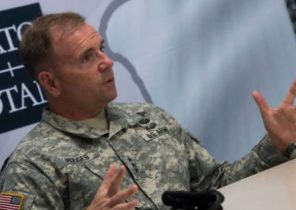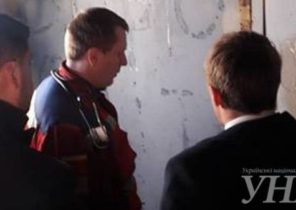
Famous Prussian military theorist Carl von Clausewitz said that “war is merely the continuation of politics by other means”. This quote is as relevant as ever in the context of war with the “Islamic state” (banned in Russia as a terrorist organization — approx.ed.). We are talking about a new war with its own characteristics, but there she shared with the conflicts of the past. One example would be the confrontation between Germany and the Soviet Union on the Eastern front during the Second world war.
Let’s start with a few historical facts. In June 1941, Hitler launched operation “Barbarossa”, breaking the Soviet-German Pact of 1939. In this large-scale operation German dictator involved about 3.8 million soldiers. Destroy Germany, the war would be quick (hence the term “blitzkrieg”), as well as ideological, to show the superiority of Nazism over Communist ideals. The continuation of Hitler’s policies, to paraphrase Clausewitz.
22 June 1941 at 5 o’clock in the morning the first soldiers of the Wehrmacht entered the Soviet troops occupied the territory of Poland. So there was the Eastern front. In the first months of the conflict, Hitler’s army triumphantly moved forward, surrounded by the enemy and crushed the Soviet resistance. Wehrmacht troops were divided into three groups. In the North and in the center of the target was Leningrad and Moscow: the Fuhrer sought to destroy these cities-symbols of communism (after the victory he intended to establish on the site of Moscow artificial lake). In the South under the scope got the Caucasus and Baku: the objective was to take control of raw materials, which is sorely lacking army for the long war.
The first high-profile success gave hope for a quick victory. The Soviet Union was already staggering under heavy blows. But he stood his ground. The Wehrmacht approached Moscow and Leningrad. At the sight of the German offensive, some Muscovites even tore up their membership cards!
Nevertheless, Moscow’s Kremlin stands to this day as remnants of the heritage of the Soviet superpower. The red army was able to reorganize and develop an effective strategy against the invaders. Moreover, it has been significantly weakened by the Stalinist purges of the 1930-ies. At the beginning of operation “Barbarossa” there were frequent problems with discipline (the officers were is not easy to gain the respect of the soldiers) and Soviet military-industrial complex was unable to raise production to the required army level.
After many meetings with generals, Stalin managed to move the Soviet production to the Urals and to create a transport network for delivery to the front. In addition, he sent American aid through Iran to protect the road and not allow the precious cargo to fall into the hands of the Germans. The results were noticeable by the end of 1942: the red army soldiers were better armed and prepared. At this moment comes into play too often overlooked element that allowed the red army to defeat the Wehrmacht: Soviet military art.
This tactic helped to stop the operation “Typhoon” in September of 1941 (the environment) and not to allow the Germans to capture the capital. Later brought the fruits of large-scale maneuvers in the environment, such as operation “Uranus” which was launched in November 21942 years for the liberation of Stalingrad 6th army of General Paulus. This gigantic operation was designed to achieve two goals: to cut off the Germans from supplies and achieve disruption of the encircled army. All this allowed the Soviet forces to repel the attacks of the enemy and to completely liberate their territory.
It was achieved thanks to the great military strategist Marshal Zhukov. Moreover, he enjoyed freedom of action in relation to Stalin. I must say that the leader gave to his generals relative independence, not forcing them to explain every step. This approach has allowed military strategy to fully Express themselves.
The response of the Germans was insufficient: the small number of reinforcements (in particular because of the American landing in Africa, which opened for Germany a second front) and the tendency to underestimate the military resources of the USSR. Furthermore, Hitler did not leave the slightest freedom of action to the generals and created a bureaucratic army, which had to report about each step. It quickly became an obstacle, especially in 1942, when Germany had to fight on two fronts.
This situation allowed the red army to regain the lead thanks to an unexpected and painful for the enemy operations.
Soviet military strategy involves a long war with a series of operations to neutralize the enemy militarily and logistically. A similar approach could bear fruit in the war against DAISH as it is primarily ideological in nature.
The fact is that although the “Islamic state” takes the position, it “exports” your terrorism attacks on enemy territory. However, it is fighting on unfamiliar ground and trying to suddenly strike where the government would not expect. Not aware of it and their response capacity. This behavior is reminiscent of the position of the Wehrmacht, who in the Zenith of power in early 1942 did not realize that the blitzkrieg against the USSR wouldn’t work.
Even in cases where, it would seem, all is already lost, a radical reorganization of the military strategy, industrial policy support of the army and the system of international alliances can completely change the trend. Let’s hope that the attack in the Church of Saint-étienne-du-Rouvray 26 July 2016 will become the Stalingrad of the war with the Islamic state.







